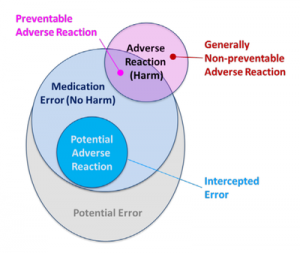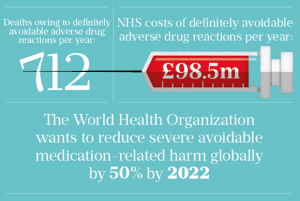Medication error
According to the National Coordinating Council for Medication Error Reporting and Prevention, medication error can be defined as “any preventable event that may cause or lead to inappropriate medication use or patient harm while the medication is in the control of the healthcare professional, patient or consumer”. In the USA alone, medication error results in at least 1.5million people injury and costs USD 3.5billion to treat annually. Globally, medication error costs around USD 42billion every year.
Medication error can happen throughout the medication-use system, the 4 most common types of medication error were wrong time error, unauthorised drug error, omission error and dose error. The most frequently drug associated with medication error was analgesics.
In Malaysia, the highest chance of occurrence of medication error happened in the emergency department. Emergency department is busy in nature and has a heavy workload with a greater heterogeneity of patients and medications. In 2009, the number of medication errors reported to the national center was 2626, which increased to almost 20,000 errors in 2017. Fortunately, 98% of medication errors reported to the National Medication Error Reporting System did not result in harmful effects.
The first strategy to avoid medication error is to ensure the five rights in medication administration. Every correct medication should be prescribed to the correct patient, at correct dosage, via the correct route and timed correctly. Double check or even triple check on every procedure in drug dispensing, information regarding medication and others could help to prevent medication errors from happening as well.



